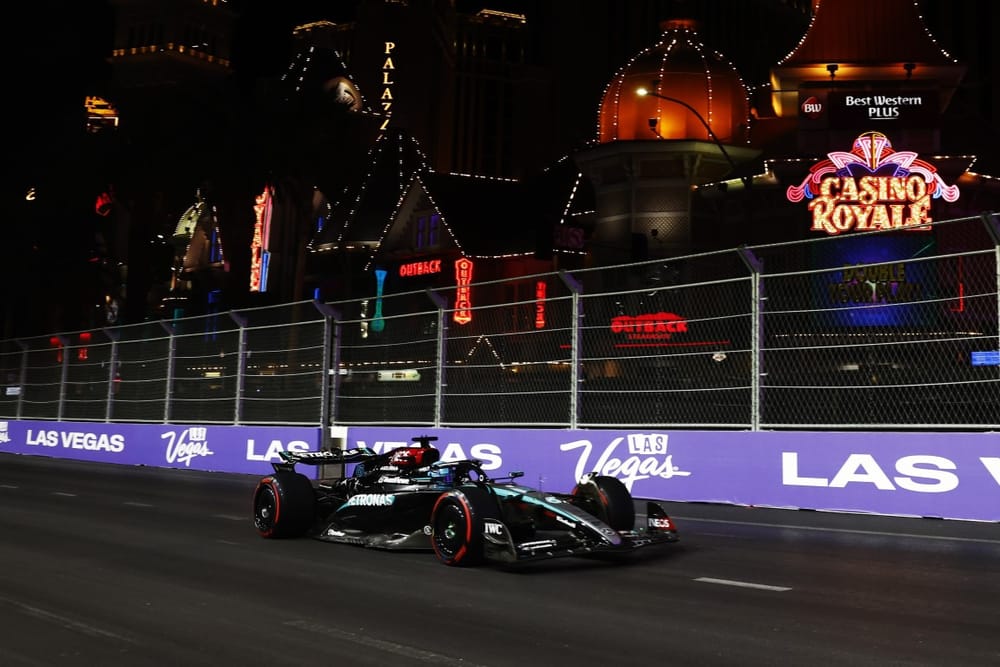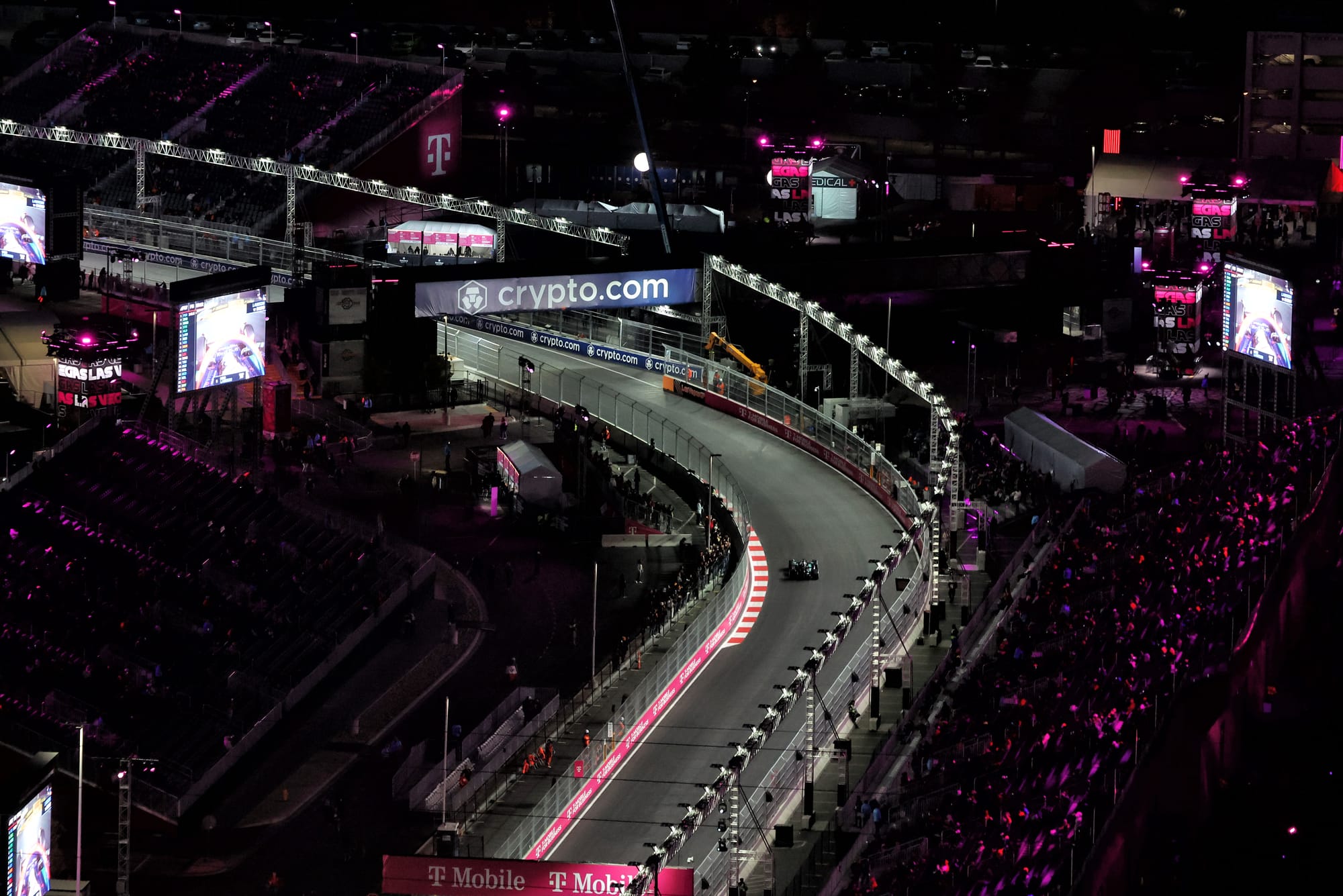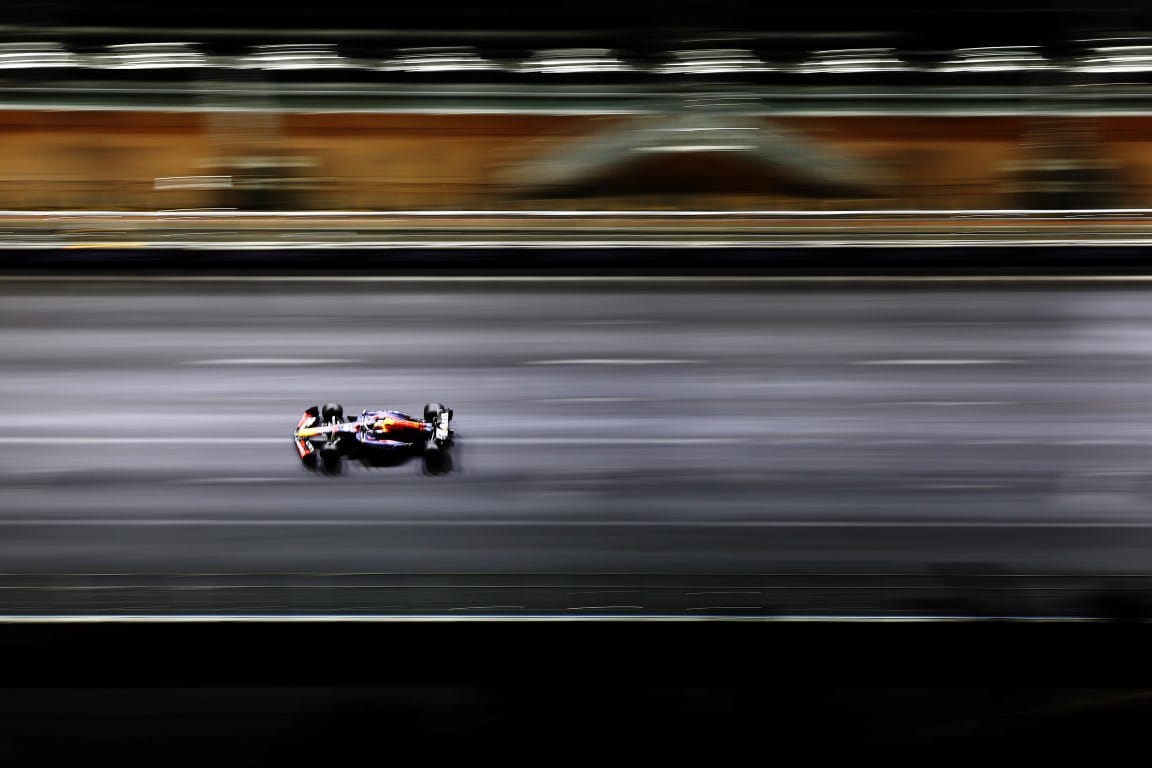Up Next

A Mercedes on pole and an Alpine in third wouldn’t have been a popular pre-weekend prediction, but in Las Vegas Grand Prix qualifying fine distinctions of car traits were completely dwarfed by who could and who could not get good tyre temperature at the beginning of the lap.
"They take 0.3s from us in sector one," said second-fastest Carlos Sainz about Mercedes. "They can just switch on the tyres so much faster than us." The Ferrari was less than 0.1s behind over the lap, not quite able to use its superior straightline speed to counteract the Mercedes' big grip advantage through Turns 3-4 and 5-6.
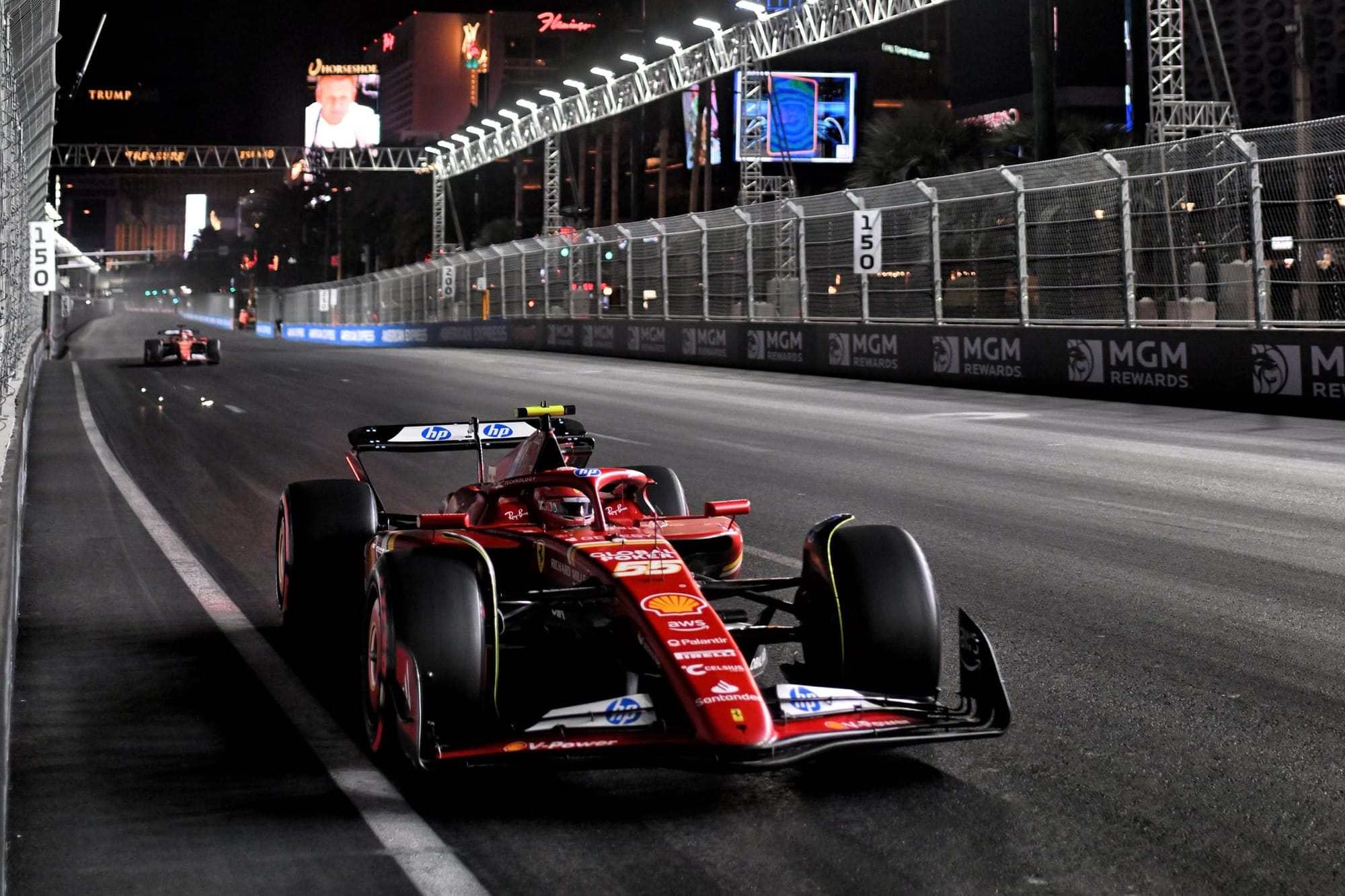
Around a cold track with a very low-grip surface, instant tyre performance was gold dust. The Alpine was good at that, too - and Pierre Gasly did a peach of a lap to go third. But even the Alpine needed a prep lap to get the sector one grip, as did the Ferraris, Max Verstappen's fifth-fastest Red Bull and the McLarens.
The Mercedes, though, could deliver immediately, so had the advantage of new tyre grip through the lap. Crucially, that advantage was compounded in that it allowed the W15s to be fuelled lighter, for one flying lap rather than two and so having the ultimate combination of lowest weight and highest grip.
"We're scratching our heads about it a little," said Russell of Mercedes' form here - his team fastest in FP1, FP2, FP3, Q1, Q2 and Q3.
Coming in, Mercedes expected the cool conditions to help it - the car was similarly quick at Montreal, Silverstone and Spa - but the Vegas track layout looked unfriendly to the car's traits. Turns out, any disadvantage the slow corners imposed on the car was more than negated by how much more tyre grip it had.
"It’s no secret that we've suffered an understeer problem," said Russell, "but you're sliding around here so much that becomes less noticeable and in the first sector the car just felt on rails."
Compared to the others, the Mercedes had the advantage of temperature and new rubber grip through there. Even after a prep lap which took out the peak grip of the tyres, the Ferrari's fronts were still a little under-temperature.
Furthermore, a long-duration corner requiring combined braking and lateral load is exactly the Ferrari's weakest point. It's why Sainz is convinced the car will not be quick in Qatar.
Here, at least it only had Turns 3-4 and 5-6 to expose that trait. The rest of the lap - short, sharp corners and lots of straight - was perfect for the car. The only difference between Sainz and fourth-fastest Charles Leclerc here was Sainz's better handle on the outlap tyre prep challenge. Leclerc was a little overcautious on the outlaps but Sainz found that narrow sweet spot.
The were a few other key factors making Russell's life easier. They were:
Hamilton's Q3 dramas
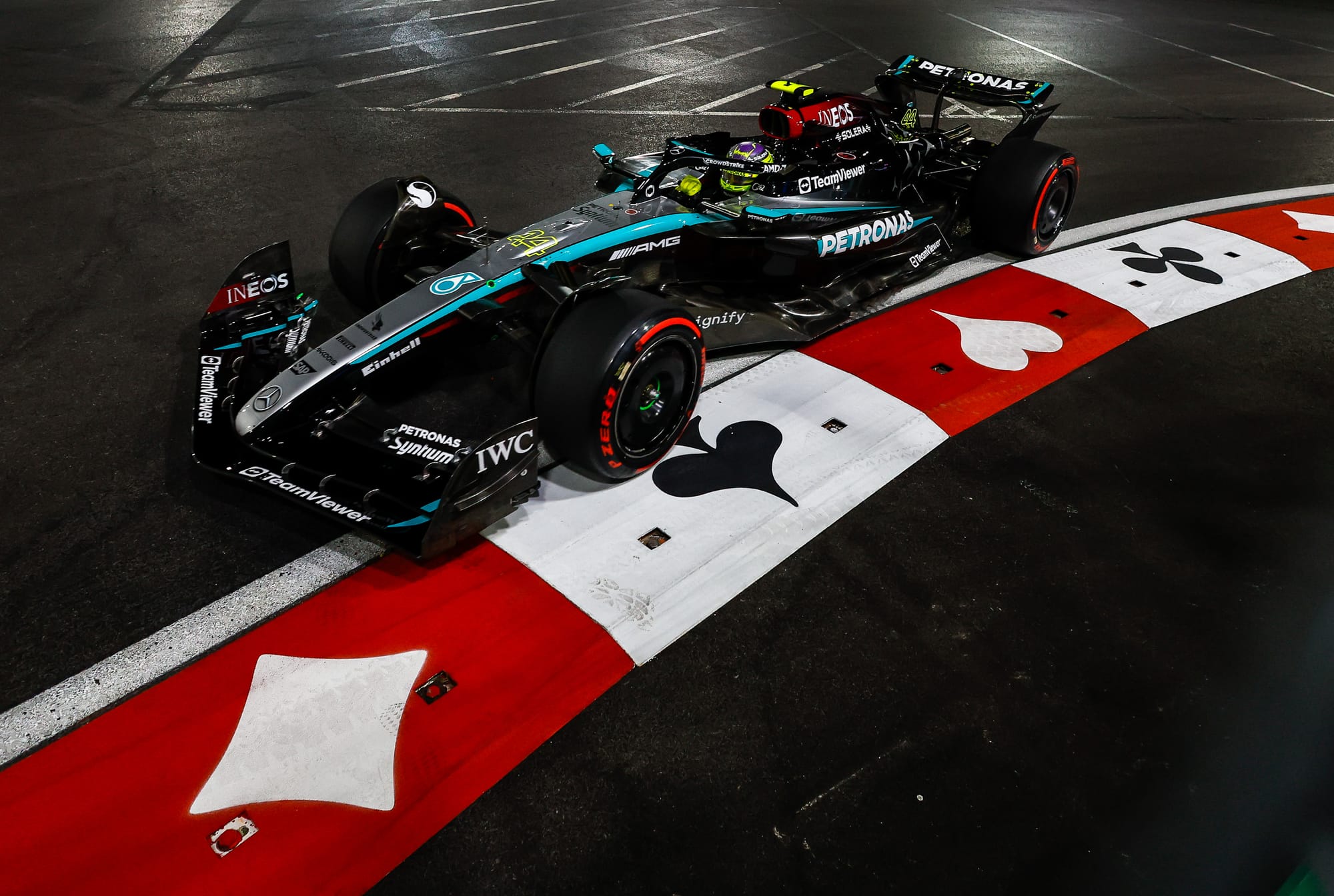
Lewis Hamilton - on the same pace or better than Russell every time the cars ran - messed up both his Q3 runs and starts 10th.
Overshooting the braking zone into Turn 12 on his first run, the inside-front began to lock, pulling him wide of the apex. He bailed out and took the escape road. It didn't seem a big drama as there was plenty of time left as he came into the pits to refuel and have his second set of new softs fitted.
Pushing hard through Turn 4 on his final run, with time only for a single lap, he got a big oversteer snap which took him out wide beyond track limits and ruined the lap.
Russell's quick front wing change
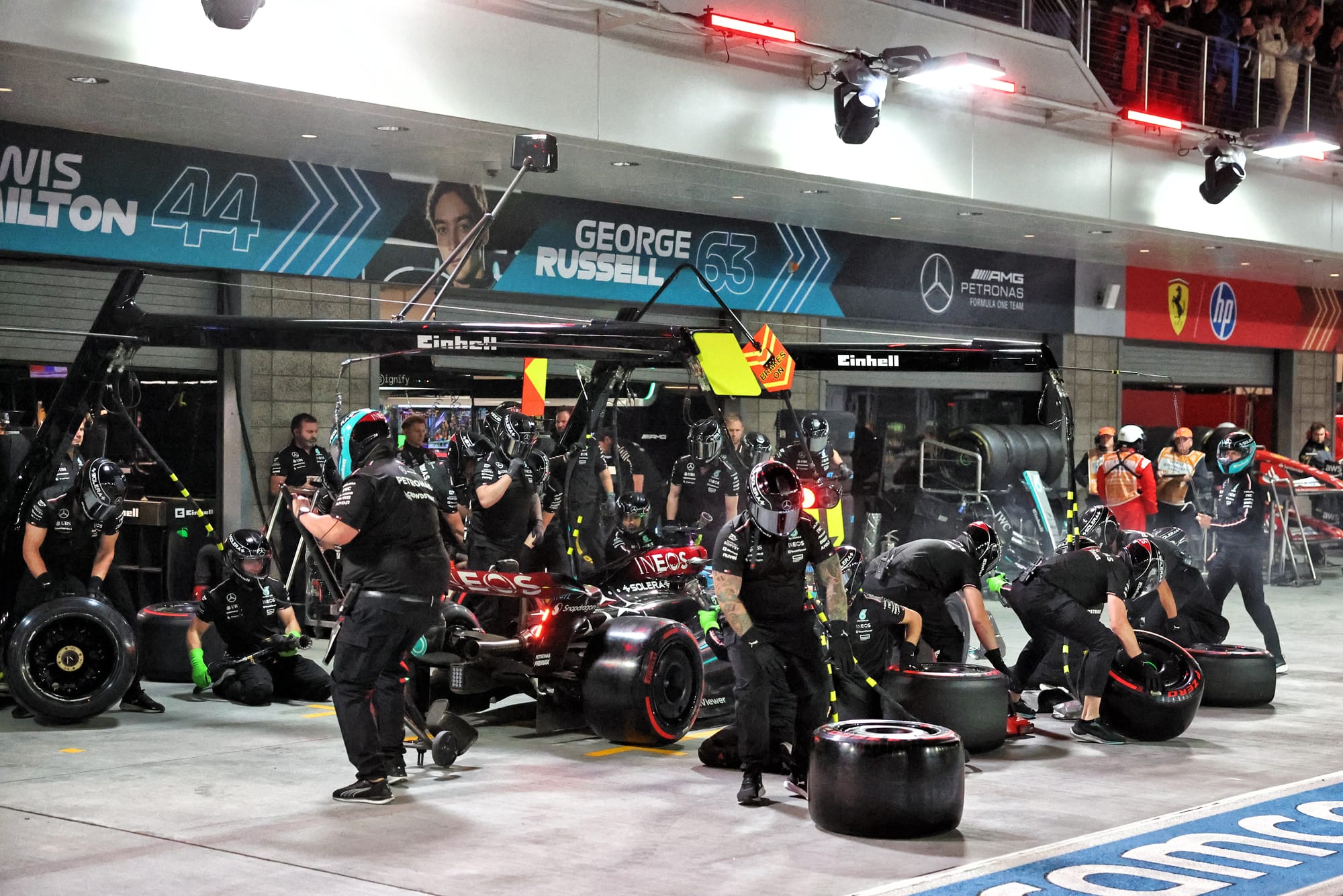
The Mercedes crew was able to quickly replace the front wing Russell had damaged on his first Q3 lap as he nudged the wall on the exit of Turn 5. "I thought we were going to run out of time because of that, but they were so quick."
Had he not been able to get out in time for that second lap, the track ramp-up was spectacular enough that what had been fastest in the first runs would have left him only fifth at the end.
Red Bull's lack of suitable rear wing
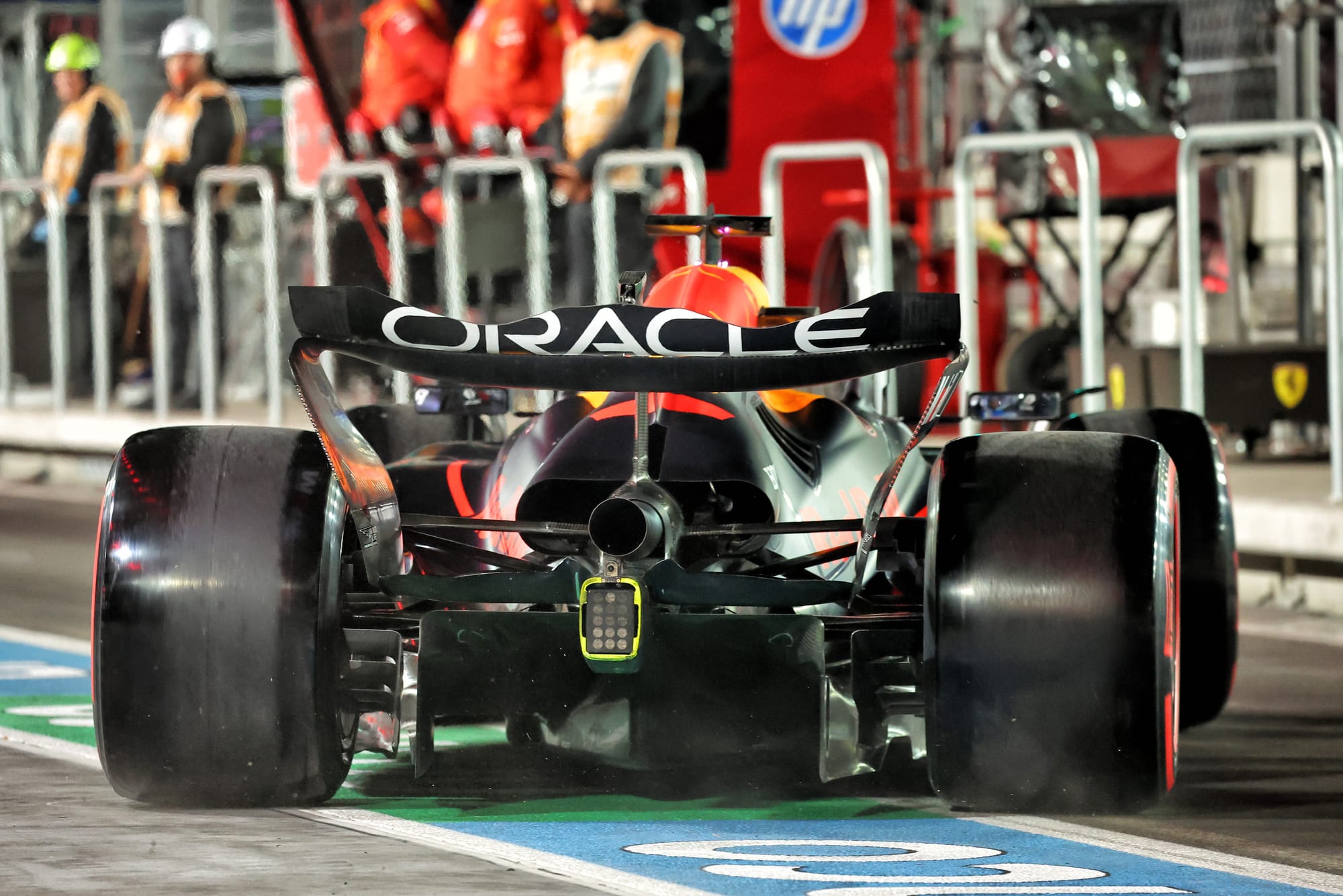
"We haven't got a special Monza-type wing," explained Verstappen of how the team chose not to do a specific super-low-drag wing that would be used only at two tracks, three at a push. "It's been like this for the last three years and it's to do with the cost cap. But maybe we need to review that."
So the standard low-downforce wing was creating a lot more drag than that of its rivals. "We cut it away for today," said Verstappen of the big swooping cuts made to the flap overnight.
But that's a much less efficient way of losing drag than doing a tailor-made low-drag wing - it loses a lot of downforce along the way. "But that means that you don't get much of a gain with DRS. That will hurt less in the race because you're not always using DRS, of course."
Verstappen was losing 0.163s on the long back straight to Russell (and 0.242s to Sainz). But as he arrived at the beginning of that straight, he was already 0.3s behind thanks to the lack of downforce and the Red Bull's natural reluctance through the tighter turns.
Verstappen did a brilliant job just getting it to fifth on the grid, his late braking into Turn 14 at the end of the straight finding him a chunk of time over everyone. He'd also somehow found a way to generate adequate tyre temperatures, something which team-mate Sergio Perez was unable to do, putting him out in Q1.
McLaren's stalling out
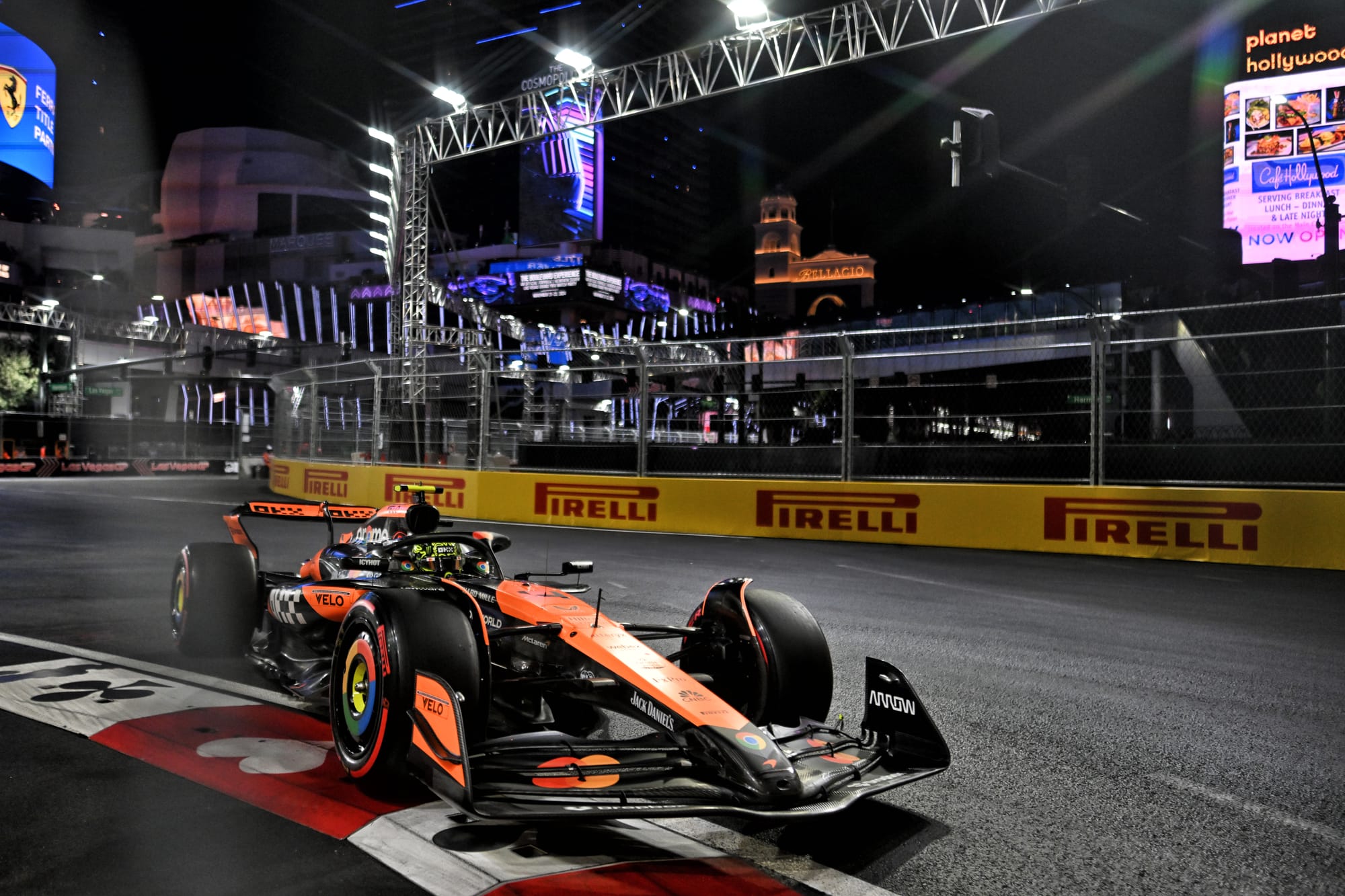
Lando Norris and Oscar Piastri were only sixth and eighth respectively, finding no time between Q2 and Q3 despite the grip ramp-up. It was another car struggling for warm-up. "We were struggling with something different in each corner," said Norris, "and so it was a big challenge to nail every problem every time. It was just impossible to be consistent."
"The car in this configuration and these temperatures just doesn't perform very well," acknowledged team boss Andrea Stella. "When we can do continuous laps, we are back in the car's more normal window, so we can be good in the race."
On which note, Sainz sounds quietly confident despite losing out on pole. "Well, we know the Merc switches on its tyres better than us," he said, "but now let's see how we compare on high fuel."
The Ferraris were 1-2 in the long runs of Thursday...


